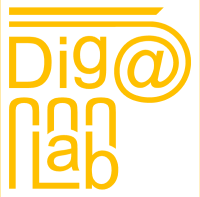Methods
- Virtual Reality
The Regium at Lepidi Project 2200 started in 2013 thanks to a collaboration between Duke University and Lions Club Reggio Emilia Host Città del Tricolore. The aim of this project is to enhance the cultural heritage of the city of Reggio Emilia, Italy through the promotion and recognition of its historical significance. More specifically, the project entails the creation of a new virtual museum and IT room designed within the archaeological museum. This initiative is one of the first scientific virtual reconstructions, in Italy, of a Roman city that will be developed through an array of digital methods which include the acquisition of existing data and their reproduction in computer graphics and virtual reality. The Regium Lepidi App is a macro-scale representation of the ancient land- and city-scape meant for a collective visualization by means of a stereo projector. The Forum Lepidi App is a fully immersive scenario focusing on the ancient forum area. This application was developed for an individual experience through the Oculus Rift head-mounted display.
Participants
- Maurizio Forte
- Nevio Danelon
zSpace is a virtual reality monitor that provides students with a realistic learning environment. The virtual-holographic images can be lifted from the screen and manipulated with the accompanying stylus. The solution allows for group interaction as participants only need 3D glasses as opposed to VR headsets.
TITA is an open-source prototype of a digital-haptic (touch) device, designed for museums, and in general for the digital communication of archaeological artifacts, monuments and sites, and art objects broadly. The aim is for the table to provide a unique and engaging interface between the museum visitor, and the breadth of digital content, modeled artifacts and virtual environments, being collected, hypothesized, and communicated by archaeologists and other researchers, using the intrinsic affordances provided through interacting with physical objects and touch-based engagement. TITA is being developed as a very versatile platform and once deployed, it could work with different digital content (not just archaeology and art).
Design and fabrication: Todd Berreth (NC State University), 3D modeling/Unity: Nevio Danelon (Duke University), PI: Maurizio Forte (Duke University).

